La sérigraphie en tons directs s'impose comme l'un des moyens les plus fiables d'obtenir des designs nets et éclatants.. Parfait pour le matériel de marque et promotionnel, Il est connu pour sa précision et sa capacité à faire éclater les couleurs. Que vous travailliez sur des vêtements, signalisation, ou imprimés personnalisés, Cette méthode fournit des résultats cohérents à chaque fois.
Curieux de savoir comment cela fonctionne ou pourquoi il est si populaire? Dans ce guide, Nous plongerons dans les détails, découvrir ses avantages uniques, et comparez-le avec d'autres méthodes d'impression pour vous aider à décider si c'est le bon choix pour votre projet.
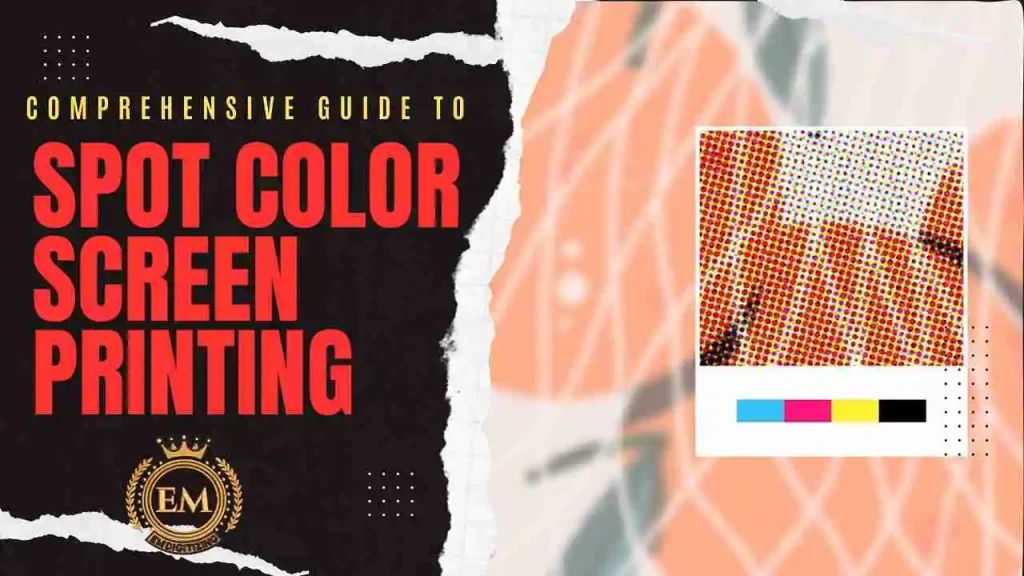
Guide complet de la sérigraphie en tons directs
Qu'est-ce que la couleur spot dans l'impression d'écran?
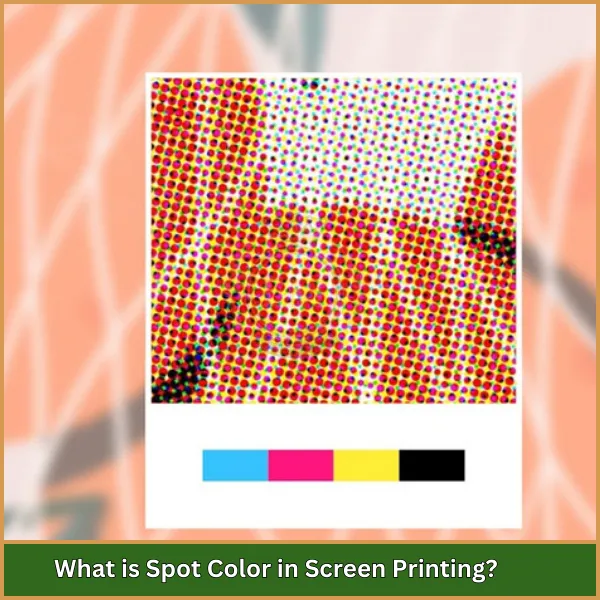
Il se réfère à une méthode où, Les couleurs d'encre pré-mélangées sont appliquées directement à l'impression, sans mélange ni ombrage. Chaque couleur est imprimée sous sa forme pure à travers des écrans séparés, Création de vif, vibrant, et designs cohérents, généralement utilisé pour les logos, texte, ou graphiques simples.
Avantages de l'impression des couleurs spot
- Produit dynamique, Couleurs cohérentes avec encres pré-mélangées.
- Rangeant pour les conceptions simples avec moins de couleurs.
- Les encres à haute opacité garantissent une excellente couverture, Même sur les surfaces sombres.
- Permet une correspondance précise des couleurs, essentiel pour les logos et la marque.
- Idéal pour l'impression en vrac, maintenir l'uniformité à travers de grandes quantités.
- Processus de configuration plus simple par rapport aux méthodes d'impression complexes.
Limites de l'impression des couleurs spot
- Limité aux couleurs unies; pas adapté aux gradients ou aux conceptions photo-réalistes.
- Coût plus élevé et temps de configuration pour les conceptions multicolores ou détaillées.
- Problème de temps pour les ordres imprimés en petits ou à un seul élément.
- Nécessite un alignement d'écran précis pour éviter les erreurs.
- Les détails fins peuvent ne pas être aussi nets ou clairs dans les couleurs des taches solides.
- Les encres traditionnelles peuvent avoir un impact environnemental plus élevé sans élimination appropriée.
La façon dont l'impression couleur est différente des autres imprimes
Lorsque vous comparez CMYK vs Spot impression d'écran couleur, La différence clé réside dans la façon dont les couleurs sont créées et appliquées. L'impression de couleurs spot utilise pré-mélangé, Encres solides pour obtenir des couleurs précises et vibrantes, Le rendre idéal pour les conceptions nécessitant une correspondance exacte des couleurs, comme les logos et la marque. Chaque couleur est appliquée individuellement, Assurer la cohérence et la clarté, Surtout pour les conceptions simples avec des couleurs limitées.
En revanche, L'impression CMYK mélange quatre couleurs de base - Cyan, magenta, jaune, et noir - pour produire un large éventail de couleurs. Tandis que CMYK est plus polyvalent pour les images et gradients photo-réalistes, Il peut parfois échouer pour atteindre des tons cohérents et vifs pour des couleurs spécifiques. Impression de couleur spot, Donc, se démarque dans des scénarios où la précision des couleurs et le dynamisme ne sont pas négociables.
Matériaux et outils nécessaires à l'impression d'écran couleur spot
Pour obtenir des résultats de haute qualité dans la couleur d'impression d'écran, Il est essentiel d'avoir les bons matériaux et outils qui assurent la précision et les impressions dynamiques.
Matériaux
- Écrans: Écrans pré-étirés ou pré-revêtus avec le nombre de mailles approprié pour votre conception.
- Encres de couleur poncée: Plastisol pré-mélangé ou encres à base d'eau pour application de couleur unie.
- Émulsion: Revêtement léger appliqué aux écrans pour créer des pochoirs.
- Film de pochoir (Facultatif): Alternative à l'émulsion pour les conceptions plus simples.
- Substrat: Éléments à imprimer sur, comme des t-shirts, papier, ou d'autres matériaux.
- Raclettes: Utilisé pour pousser l'encre à travers l'écran sur le substrat.
- Nettoyage des produits chimiques: Dégraisser, dissolvants d'émulsion, et nettoyeurs d'encre pour maintenir les écrans.
Outils
- Presse de sérigraphie: Une presse manuelle ou automatique pour tenir les écrans et assurer une inscription précise.
- Unité d'exposition: Équipement pour durcisser l'émulsion sur les écrans à l'aide de lumière UV.
- Sèche-linge flash: Utilisé pour guérir l'encre entre les couches ou le séchage partiellement sous les impressions de base.
- Presse à la chaleur ou séchoir à convoyeur: Pour guérir complètement les encres et assurer la durabilité.
- Guides d'enregistrement: Outils pour aligner les écrans avec précision pour les impressions multicolores.
- Logiciel de conception: Des programmes comme Adobe Illustrator ou CorelDraw pour créer des séparations de couleurs spot.
Quel est le processus de l'impression des couleurs spot?
La Processus de couleur spot dans l'impression d'écran implique soigneusement les étapes pour assurer une dynamique, pointu, et des impressions précises en utilisant un solide, encres pré-mélangées. Cette méthode est Idéal pour les conceptions avec des couleurs définies, comme les logos ou le texte.
Marcher 1: Préparation de la conception
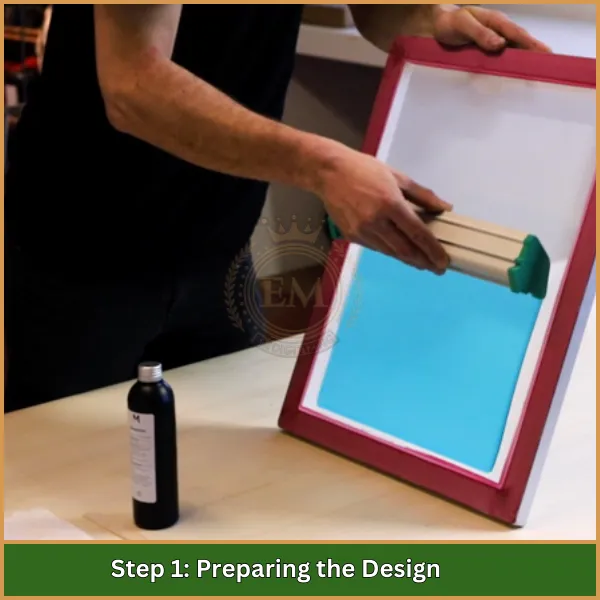
Le processus commence par la création d'un design adapté à l'impression des couleurs spot.
- Utilisez un logiciel de conception comme Adobe Illustrator ou CorelDraw pour séparer l'œuvre d'art en couleurs de spot distinctes.
- Assurez-vous que chaque couleur est étiquetée et préparée comme un calque ou un fichier séparé.
- Les conceptions de couleurs ponctuelles ne doivent pas inclure les gradients ou l'ombrage, mais se concentrer sur les blocs de couleur solides.
Marcher 2: Création du pochoir de l'écran
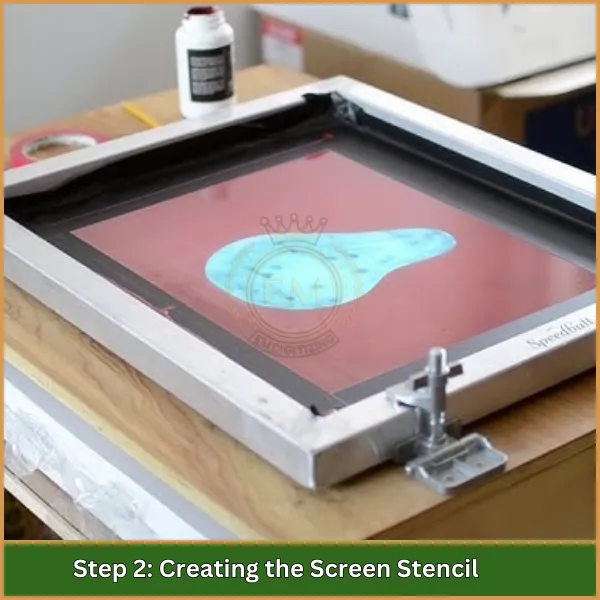
Et pochoir, ou écran, est prêt à transférer chaque couleur de tache sur le substrat.
- Appliquez uniformément une couche d'émulsion légère à travers l'écran à l'aide d'un Scoop Coater.
- Placer le design (imprimé sur un film transparent) sur l'écran et l'exposer à la lumière UV.
- La lumière durcit l'émulsion sauf là où la conception la bloque, quitter la zone du pochoir.
- Rincez l'écran avec de l'eau pour laver l'émulsion non exposée, révéler le design.
Marcher 3: Configuration de l'écran Prix
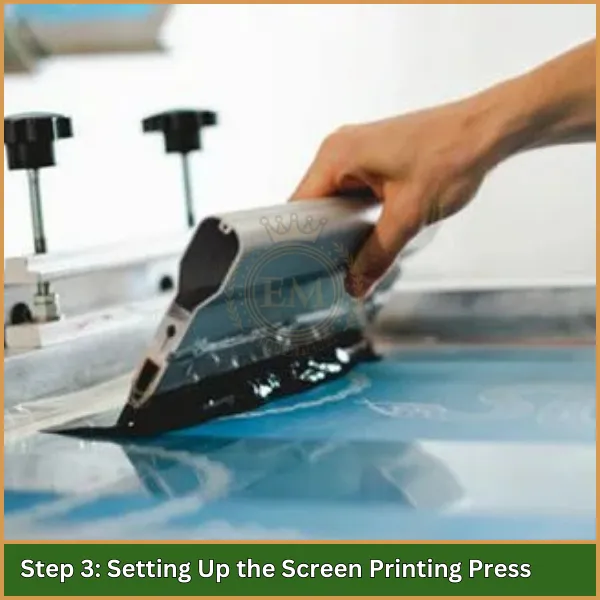
Un bon alignement est essentiel pour l'impression ponctuelle multicolore.
- Sécurisez l'écran à l'écran Impression Appuyez sur.
- Utilisez des guides d'enregistrement ou des marques pour s'assurer que chaque écran s'aligne parfaitement pour les impressions multicolores.
- Vérifiez l'alignement avec les impressions de test avant de passer au lot complet.
Marcher 4: Application de l'encre
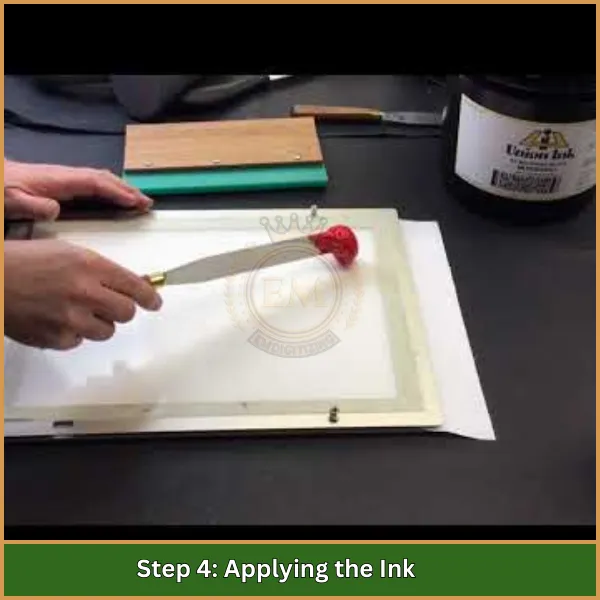
C'est la scène d'impression, où chaque couleur de spot est transférée au substrat.
- Appliquer l'encre de couleur spot choisie sur l'écran.
- Utilisez une raclette pour pousser l'encre à travers le pochoir sur le substrat dans un mouvement uniforme.
- Répétez le processus pour chaque couleur, nettoyer ou remplacer les écrans entre les couleurs si nécessaire.
Marcher 5: Guérir l'encre
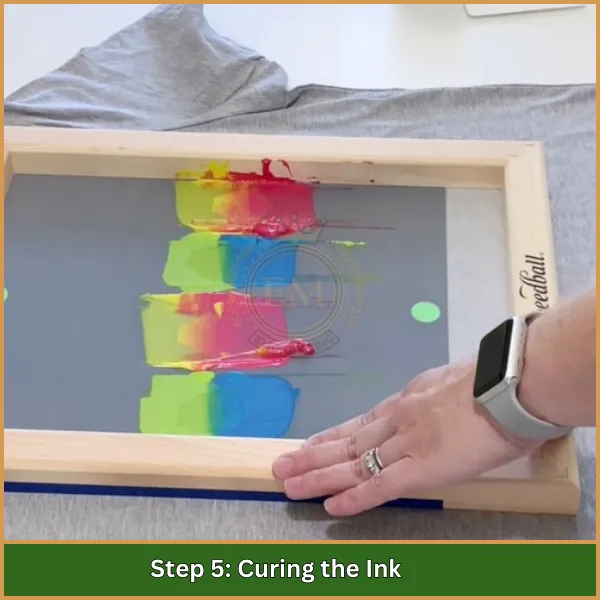
Le durcissement garantit que l'encre adhère définitivement au substrat.
- Utilisez un sèche-linge pour un durcissement partiel entre les couches d'encre dans des conceptions multicolores.
- Guérir entièrement la conception finale avec une presse à chaleur ou une sécheuse de convoyeur, généralement à 320 ° F (160° C) Pour les encres en plastisol.
Marcher 6: Écrans de nettoyage et de réutilisation

Après l'impression, Les écrans doivent être nettoyés et stockés correctement pour une utilisation future.
- Retirer l'excès d'encre avec un nettoyeur d'écran.
- Appliquer un dissolvant d'émulsion pour dissoudre le pochoir et restaurer l'écran.
- Rincer soigneusement et permettre aux écrans de sécher dans un environnement propre.
Applications de l'impression des couleurs spot
Il s'agit d'une technique polyvalente connue pour sa capacité à fournir des sorties de couleurs précises et vibrantes. Il est largement appliqué dans divers domaines pour garantir des résultats professionnels et accrocheurs. Voici où ça brille:
- Cartes de visite professionnelles: L'impression des couleurs spot garantit que les teintes spécifiques à la marque sont parfaitement adaptées, Créer des cartes de visite élégantes et professionnelles.
- Privistes et papeterie personnalisés: La cohérence est essentielle pour la marque d'entreprise, et les couleurs spot assurent l'uniformité dans tous les matériaux de bureau.
- Enveloppes de marque: L'utilisation de couleurs spot sur les enveloppes améliore l'attrait visuel et renforce l'identité de la marque.
- Garantie: Des brochures aux dépliants, L'impression des couleurs spot met en évidence des sections importantes, Faire ressortir le matériel promotionnel.
- Emballage de produits: Réaliser des riches, Les couleurs cohérentes sur l'emballage sont cruciales pour la reconnaissance de la marque, Faire l'impression de couleurs spot un choix supérieur.
- Marchandises et cadeaux: Logos et conceptions sur des articles comme des sacs fourre-tout et des t-shirts apparaissent de manière vivante avec une impression de couleur spot.
- Impressions d'art exclusives: Les artistes utilisent souvent des couleurs spot pour des éditions limitées pour maintenir l'originalité et la précision de leur travail.
- Panneaux et écrans: Lorsque la visibilité et la clarté sont primordiales, L'impression de couleurs spot délivre audacieuse, signalisation frappante.
Lignes du bas
L'impression de l'écran de couleur spot est la méthode incontournable pour produire un gras, vibrant, et des designs précis, Surtout pour les logos, graphiques simples, et les projets exigeant une précision de couleur exceptionnelle. Ce processus spécialisé garantit que chaque couleur est parfaitement adaptée, fournir des résultats nets et cohérents.
Pour services professionnels d’art vectoriel, EMdigitizing est là pour vous aider! Notre équipe propose des solutions de vectorisation de haute qualité et abordables adaptées à vos besoins. Plus, Les nouveaux clients reçoivent un exclusif 50% réduction sur leur première commande. Ne manquez pas cette offre à durée limitée - retirez-vous aujourd'hui et élevez vos conceptions avec nos services d'experts!
